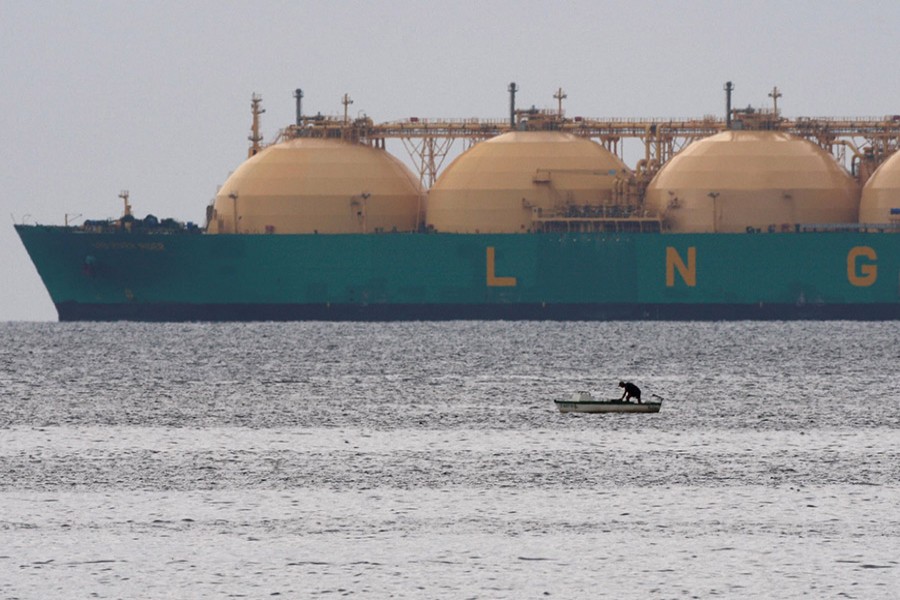The government is readying domestic consumers for feeding imported and expensive re-gasified LNG (liquefied natural gas) as it aims to start importing the fuel for the first time in the country from April 2018, officials said.
"We have talked with potential buyers and hopeful of feeding an entire volume of imported LNG in the first year of LNG imports as the consumers have remained hungry for long to get gas in their factories and plants," Petrobangla chairman Abul Mansur Md Faizullah told the FE on Tuesday.
He said gas-guzzling industries and power plants in the port city Chittagong, where LNG import terminals will be located, will first get imported re-gasified LNG.
Top officials of Petrobangla and Energy and Mineral Resources Division under the Ministry of Power, Energy and Mineral Resources (MPEMR) already held several rounds of meetings with Chittagong-based businessmen over the government plan and their intention to feed first LNG there, industry insiders said.
Businesspeople of Chittagong responded positively to get first imported re-gasified LNG, they added.
Chittagong is currently getting around 240 million cubic feet per day (mmcfd) of natural gas, which is 57.55 per cent of its current requirement of around 417 mmcfd and the demand is set to soar to around 581 mmcfd in 2018, the Petrobangla chairman said.
The city is expected to consume around 341 mmcfd of re-gasified LNG on the first year of imports, he added.
Chittagong is the worst-affected city in Bangladesh out of its natural gas crisis due to the closure of the country's lone offshore Sangu gas field, located in Chittagong division, in October 2013, president of Chittagong Chamber of Commerce and Industry (CCCI) Mahbubul Alam said.
He said Sangu field was supplying as high as around 220 mmcfd during its peak output in 2006-07, which prompted many entrepreneurs to set up new industries and expand the operational ones.
Businessmen invested around Tk 40 billion (US$ 500 million) to set up gas-guzzling steel and re-rolling mills, textiles, cement and glass factories, said Mr Alam.
After the closure of offshore Sangu gas field, the new industries numbering around 300 remained idle due to non-availability of natural gas, he said.
Most of the entrepreneurs invested in their factories taking out loans from commercial banks. They are now counting bank interest, even though they have yet to start business operation, he lamented.
Many of their valuable equipment already got damaged and now turned into scrap, he added.
"But now we are hopeful of getting new imported re-gasified LNG from mid-2018 as the government has assured us of supplying it," he said.
"Some 300 industries in Chittagong are expecting to get gas from mid-2018," Mr Alam said.
Most of these factories were built before the closure of offshore Sangu gas field.
Many new economic zones, now being set up in and around Chittagong, are also expected to get re-gasified imported LNG, he added.
Bangladesh Economic Zones Authority (BEZA) is currently building the country's biggest economic zone on around 30,000 acres of land at Mirsarai in Chittagong where the factories would be provided with re-gasified imported LNG, said BEZA executive chairman Paban Chowdhury said.
"We already held discussions with Petrobangla and respective state-run gas distribution companies to get re-gasified imported LNG for the industries being set up in the economic zone," he added.
Power plants across the country would also be key consumers of imported LNG, said Mr Faizullah.
Power plants owned by both public and private sectors are expected to consume 700 mmcfd of re-gasified imported LNG in 2018, he added.
According to statistics, state-run Bangladesh Power Development Board's (BPDB) electricity generation of 1,335 MW was hampered only due to gas crisis as on October 24.
Petrobangla could not provide 503 mmcfd of natural gas to some 15 gas-fired power plants halting electricity generation of around 2,181 MW as on October 23.
Applications numbering 1,400 are now pending with Petrobangla for industrial gas connections, the Petrobangla chairman said.
Bangladesh aims to import around 1,400 mmcfd equivalent of LNG by December 2018 as its first LNG import terminal, a 3.75 million tonne per year FSRU (floating, storage and re-gasification unit) being developed by US-based Excelerate Energy, is expected to be commissioned in April 2018 and its second FSRU, also having a capacity of 3.75 million tonne per year, being developed by Summit Group, is expected to be commissioned by October, 2018.
Petrobangla on Sept 25 inked the country's first-ever sales and purchase agreement (SPA) with Qatar's RasGas to buy 2.5 million tonne per year of lean LNG over 15 years.
Bangladesh is eager to ink more SPAs soon as it is in negotiations with four other potential LNG suppliers with whom it has inked MoU to import LNG recently.
Separately, Bangladesh is seeking to import spot LNG from suppliers taking advantage of a downtrend in LNG prices in the global market.


